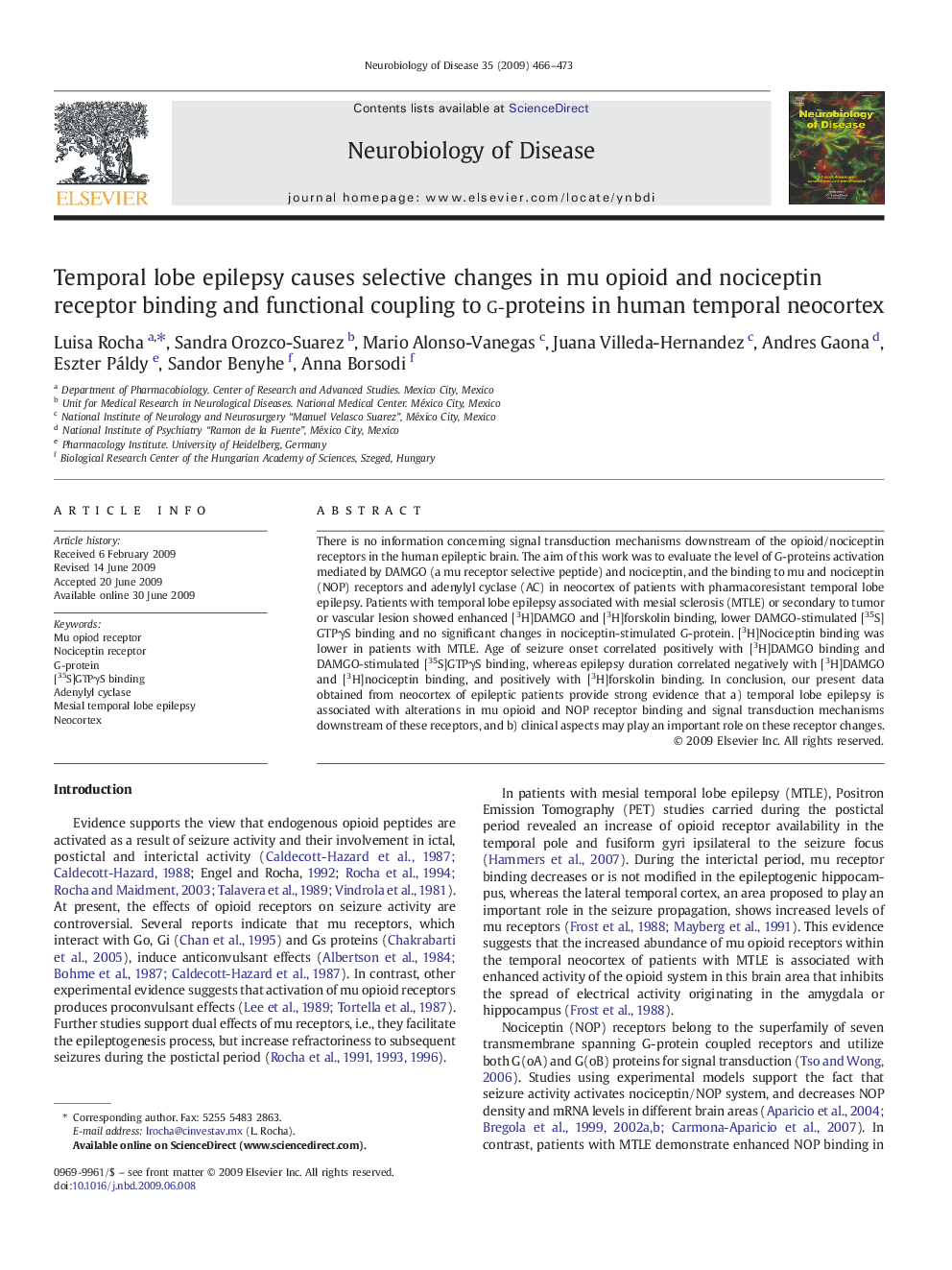| Article ID | Journal | Published Year | Pages | File Type |
|---|---|---|---|---|
| 3070209 | Neurobiology of Disease | 2009 | 8 Pages |
There is no information concerning signal transduction mechanisms downstream of the opioid/nociceptin receptors in the human epileptic brain. The aim of this work was to evaluate the level of G-proteins activation mediated by DAMGO (a mu receptor selective peptide) and nociceptin, and the binding to mu and nociceptin (NOP) receptors and adenylyl cyclase (AC) in neocortex of patients with pharmacoresistant temporal lobe epilepsy. Patients with temporal lobe epilepsy associated with mesial sclerosis (MTLE) or secondary to tumor or vascular lesion showed enhanced [3H]DAMGO and [3H]forskolin binding, lower DAMGO-stimulated [35S]GTPγS binding and no significant changes in nociceptin-stimulated G-protein. [3H]Nociceptin binding was lower in patients with MTLE. Age of seizure onset correlated positively with [3H]DAMGO binding and DAMGO-stimulated [35S]GTPγS binding, whereas epilepsy duration correlated negatively with [3H]DAMGO and [3H]nociceptin binding, and positively with [3H]forskolin binding. In conclusion, our present data obtained from neocortex of epileptic patients provide strong evidence that a) temporal lobe epilepsy is associated with alterations in mu opioid and NOP receptor binding and signal transduction mechanisms downstream of these receptors, and b) clinical aspects may play an important role on these receptor changes.
